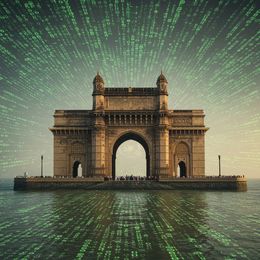LAST MARCH, when Prime Minister Narendra Modi and Microsoft co-founder Bill Gates met to talk technology, the prime minister quipped that AI and aai—the Marathi word for mother—had an almost homophonic similarity. I chuckled, as my early years were spent in Maximum City.
While reading Deputy News Editor Navin J. Antony’s cover story on how Mumbai was becoming AI’s aai in India, I thought of that old reference. With its financial clout, booming data market and strong industry-academia interface, Mumbai is best poised to nurse this disruptive infant. Well, should I even call it an infant, considering that AI and I have barely five years between us? Stanford mathematician John McCarthy coined the term artificial intelligence in the 1950s.
Our Resident Editor R. Prasannan has a bit of advice for every young journalist: “Make a hard story soft, and a soft story hard.” If a story is all facts, we might as well whack the reader on the head with a brick. And if it is all soft, it is just English with nothing to chew on.
Navin has deftly straddled both worlds to bring you the people who are powering the AI growth story in India. From “Night Professor” Raghavan B. Sunoj to young Arpit Agarwal who came to IIT Bombay via Harvard, Columbia, Google and Meta. Even Haji Ali Bukhari, the sage who lends his name to Mumbai’s Haji Ali area, finds a mention.
The reference to how IIT Bombay’s first computer—a Minsk II from the USSR—fostered the spirit of experimentation in the university brought back memories of some of the presses that churned out THE WEEK and the Malayala Manorama. It was not uncommon to walk into the press building and see the innards of a press splattered all over the floor. In an age where there was no YouTube for repair videos or the internet to reach out to manufacturers for advice, our engineers had to be creative to get the old boys running.
The centrepiece of the cover is the interview with writer Yuval Noah Harari, who argues that the rise of artificial intelligence—dominated by Washington and Beijing, for now—could fracture the world, resulting in countries trying to create their own digital spheres.
I remembered what Senior Assistant News Editor Ajish P. Joy wrote a couple of weeks ago about US President Donald Trump’s possible vision for a world with just three spheres of influence—the US, Russia and China. Marry that with what Harari says, and we have an unquiet future in the offing. So, AI is not just technology, but a disruptor that will upend the world as we know it.
Apologies for being carried away by the cover and not mentioning other articles. In @leisure, Senior Correspondent Shubhangi Shah writes about the bloom of literary festivals across the country. And on the political front, Senior Special Correspondent Puja Awasthi writes about how the Bahujan Samaj Party has not been able to turn supporters into voters of late; Correspondent Badar Bashir about how prolonged dependence on the Rashtriya Janata Dal in Bihar has hobbled the Congress organisationally.
The columns, too, are a fragrant bouquet. Shobhaa De on Noel Tata. Dr Mazda Turel on the optic nerve. Jay Panda on sport and diplomacy. Prasannan on Balochistan. And, dear KC’s circuitous take on the circular economy.
True, KC, you are spot on about school uniforms of our era. A new set was supposed to run for three years. In the first year, the uniform would take one step when you took two. In the second year, it would fit almost perfectly. And, in the third, it would show a bit of ankle and wrist—and waist, too, if you dared to raise your arms.


